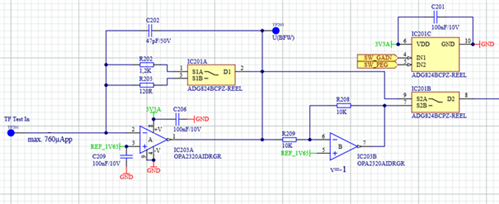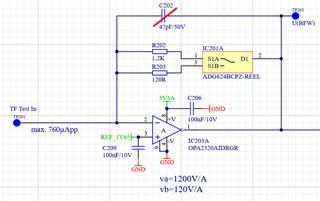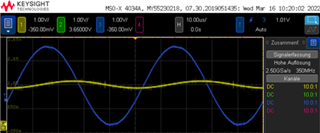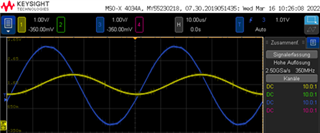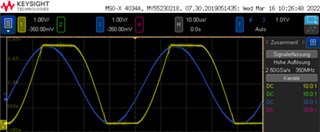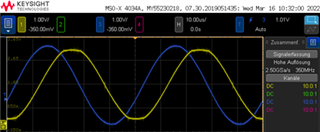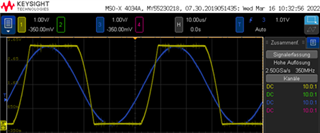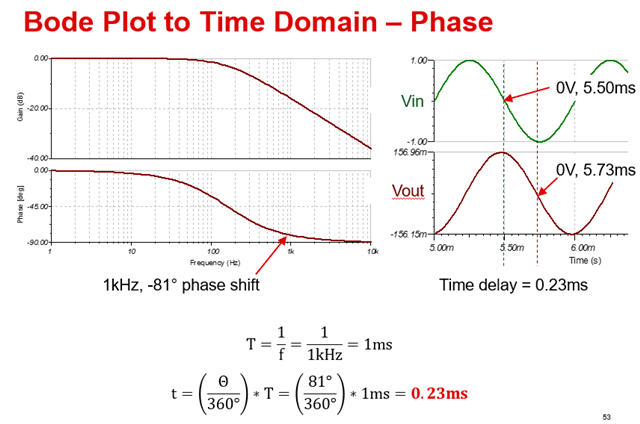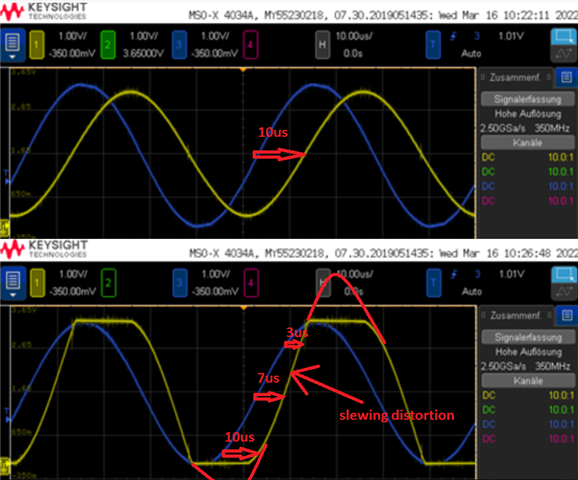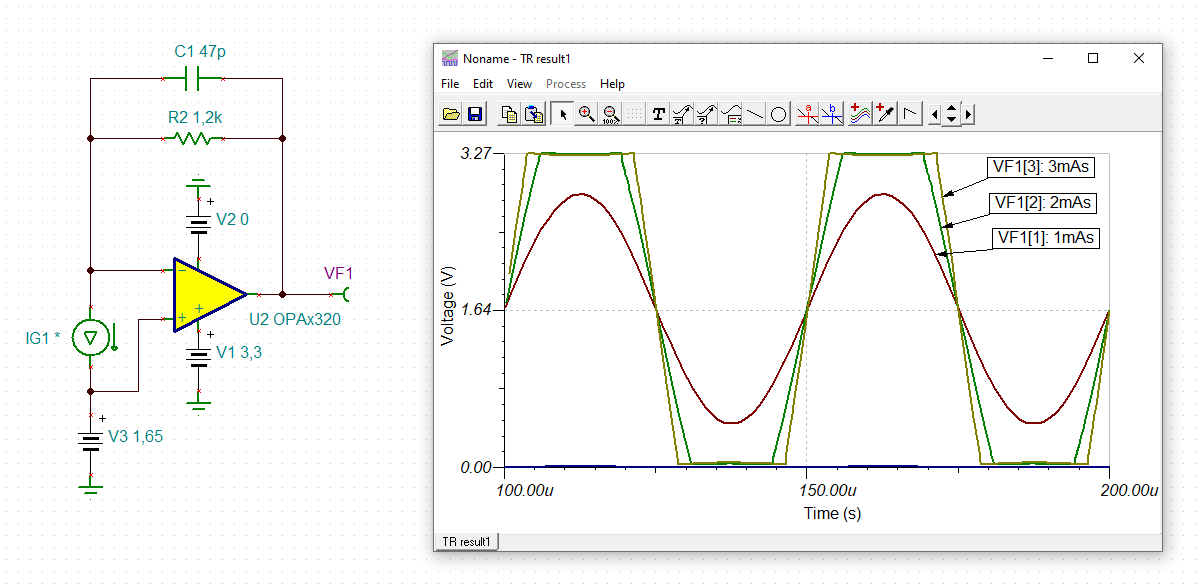Other Parts Discussed in Thread: TINA-TI
Hello,
I use the OPA2320 as transimpedance amplifier. If the output voltage exceeds the operating range, the outputsignal gets a phase delay.
In chapter 7.3.4 of the datasheet (Fig. 34) is shown, that the amplifier has no phase reversal.
I attach some pictures to show my problem. The inputsignal is a sine, synchron to the blue signal; the outputsignal is the yellow one. If the amplitude rises boyond the operating range the phase of the (yellow) output is shifted. (The green signal is the output of a Phase Sensitive Detector.)
Can anyone give some advise to avoid this behavoir or can recommend some (pin-)compatible amplifier?
Is this a known issue?
Thanks, Jan
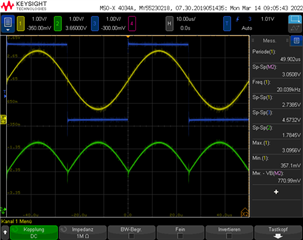

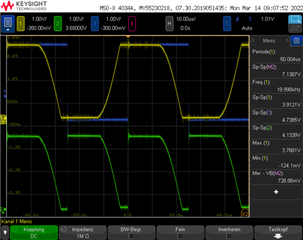
Edit: I would expect an rectange or trapezial signal at the output.
The supply voltage of the OPV is 3.3V single supply
